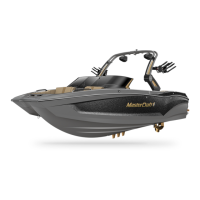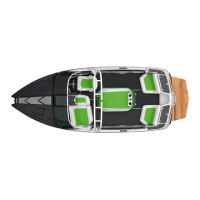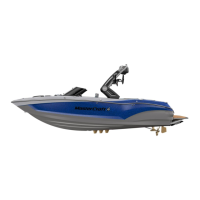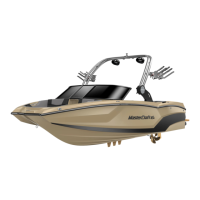Signal your intentions
Well before stopping, turning, changing lanes or passing, use turn
signals to let other vehicles know what you intend to do.
Drive in tow vehicle manufacturer recommended gear
If the tow vehicle has a manual transmission, traveling in lower
gears when going up steep hills or over sand, gravel or dirt roads
will ease the load on the engine and transmission. When driving
on long downhill grades, try to avoid downshifting. Running in a low
gear going downhill, which uses the engine as a brake, can actuate
the trailer’s surge brakes continuously for the duration of the grade,
causing them to over-heat. A better procedure is to slow down be-
fore the start of the down grade and maintain a controlled downhill
speed with repeated application and release of tow vehicle (and
thus, the trailer) brakes. This technique permits the brakes to cool
down between applications and provides for reserve braking capac-
ity in an emergency. On moderate and steep sections, downshifting
into lower gears may be unavoidable. Slowing down is important
to allow the brakes to avoid overheating. Don’t hesitate to pull over
when possible during or after severe braking situations and allow
the system to cool down. Running a stretch of highway where
braking is not necessary is the quickest way to cool down the brake
system because it allows a significant volume of air to flow through
the vented rotors and over the brake pads to cool them.
Always be courteous
Make it as easy as possible for faster-moving vehicles to pass you.
Remain in the slower lane and be prepared to reduce speed if they
need extra time to return to the lane.
Do not tailgate
Allow at least one combined car and trailer length between you and
the car ahead for every 10 mph you are traveling.
If a problem occurs, stay calm
Do not panic and do not do anything anymore suddenly or violently
than is necessary.
Sudden bumping or fish-tailing may be a flat tire
Do not jam on the brakes or mash the accelerator to try to drive
out of it. Stop slowly and in as straight a line as possible. If condi-
tions permit, allow the trailer and tow vehicle to coast at a very slow
speed and try to avoid braking, except when the wheels are straight
ahead and the trailer and tow vehicle are in line.
If the trailer begins to fish-tail under acceleration to highway speed,
back off the accelerator a little, and it should cease. If it begins again
upon acceleration, stop and check the load. If the load is not evenly
distributed, or if it is too far back so that the hitch load becomes
too light, the result can be fish-tailing. Redistribute the load before
continuing.
